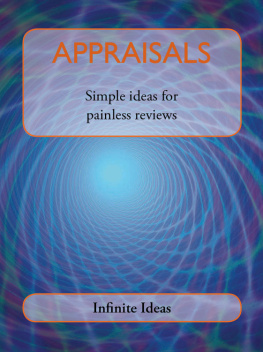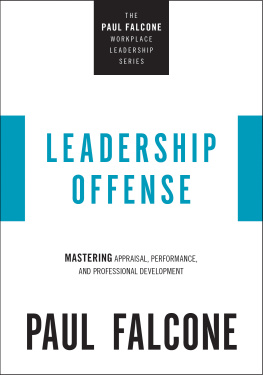CONTENTS

Copyright 2007 by Swan Consultants, Inc. All rights reserved.
Published by John Wiley & Sons, Inc., Hoboken, New Jersey.
Published simultaneously in Canada.
No part of this publication may be reproduced, stored in a retrieval system, or transmitted in any form or by any means, electronic, mechanical, photocopying, recording, scanning, or otherwise, except as permitted under Section 107 or 108 of the 1976 United States Copyright Act, without either the prior written permission of the Publisher, or authorization through payment of the appropriate per-copy fee to the Copyright Clearance Center, Inc., 222 Rosewood Drive, Danvers, MA 01923, (978) 750-8400, fax (978) 646-8600, or on the web at www.copyright.com . Requests to the Publisher for permission should be addressed to the Permissions Department, John Wiley & Sons, Inc., 111 River Street, Hoboken, NJ 07030, (201) 748-6011, fax (201) 748-6008, or online at http://www.wiley.com/go/permissions .
Limit of Liability/Disclaimer of Warranty: While the publisher and author have used their best efforts in preparing this book, they make no representations or warranties with respect to the accuracy or completeness of the contents of this book and specifically disclaim any implied warranties of merchantability or fitness for a particular purpose. No warranty may be created or extended by sales representatives or written sales materials. The advice and strategies contained herein may not be suitable for your situation. You should consult with a professional where appropriate. Neither the publisher nor author shall be liable for any loss of profit or any other commercial damages, including but not limited to special, incidental, consequential, or other damages.
For general information on our other products and services or for technical support, please contact our Customer Care Department within the United States at (800) 762-2974, outside the United States at (317) 572-3993 or fax (317) 572-4002.
Wiley also publishes its books in a variety of electronic formats. Some content that appears in print may not be available in electronic books. For more information about Wiley products, visit our web site at www.wiley.com.
ISBN: 978-0-470-04709-5
LIST OF DOWNLOADABLE FORMS AND EVALUATION STATEMENTS
Tools to Complete or Create an Appraisal Form
Sample Forms from Different Companies
Twenty-One Top Core Competencies
Four Managerial Competencies
INTRODUCTION
How to Use This Book
There are many different needs during the performance management process that draw a reader to this book. You may be confronted with the immediate need to complete your companys performance appraisal form for an employee who reports to you. If so, turn immediately to Part III, Ready-to-Use Downloadable Evaluation Statements, which is a particularly useful resource for that purpose. It allows you to select, download, and insert into your performance appraisal form evaluation statements that best fit the employees performance on many core competencies. No matter what issues you are asked to comment on for an employees performance, you will find relevant statements in one or more of these competency forms. Note that although we have chosen what we consider to be the most common titles for the competencies, it is the content of the evaluation statements that are important. Therefore, readers should not be put off if, for example, we have labeled a competency Customer Focus and on their form this competency is called Client Service. The idea is the same, and the text included in this chapter would be entirely applicable.
For each of the twenty-one core competencies and four managerial competencies, we have provided evaluative statements for three levels of performance: Exceeded Expectations, Met Expectations, and Did Not Meet Expectations. This provides you with more precise statements to quickly choose, download, and insert onto the employees form. The narratives are loosely based on a mid-level employeethat is, on someone who is neither extremely junior nor extremely senior. However, the phrasing is general enough that with just a few tweaks, the text could be made applicable to any job level.
Our research has indicated that the most challenging and time-consuming part of completing the performance appraisal form for managers is writing descriptions of an employees performance against the competencies listed on the form. We therefore carefully selected the most commonly used and universal competencies and provided actual statements you can download, adapt, and use immediately. It is our firm belief that the editing process is much easier than the creation of performance text from scratch. The text provided in this book is meant to be able to be cut and pasted into a performance form and used exactly as is (with minor edits, such as including the employees name, for instance). We urge you to add specific examples from the employees behavior during the review period to enrich and personalize the statements. The employee him/herself can and should be a source for these behavioral examples.
At the other end of the reader continuum are human resources professionals (or task force teams) who are asked to create or recommend a new performance appraisal form for their organization. Alternatively, you may be charged with the responsibility to improve an existing form. Part II, Chapter 3, contains a Model Performance Appraisal Form ready to be downloaded and adapted to your organizations needs. We purposely kept the format simple for ease of use by the reader, but you can easily retain the logic and elements of the form, while adding your organizations logo and otherwise designing the visual layout in any way you like. This model form draws on the best-practice aspects of performance management, and the chapter also provides an explanation of each section of the form.
Chapter 4 provides more in-depth information on selecting competencies, choosing a rating scale, and working with your existing form.
Chapter 5 adds examples of actual performance appraisal forms from different companies, so you can compare and contrast the approaches used. Integrating a particularly relevant concept from Chapter 4 into your modification of the model form from Chapter 3 might be a successful strategy.
Finally, there are the readers who have direct reports or employees, and who are seeking to understand the performance management process for their own use, or for their organization. Traditionally, the members of this group are identified as corporate managers and supervisors. However, any small business owner, physician, dentist, architect, optometrist, lawyer, or real estate broker who has at least one employee or associate also needs to manage that persons performance. For this larger audience, the entire book, starting with Part I, provides a good overview of the landscape of managing performance. The tools and forms throughout the book will prove helpful as well. Additionally, the evaluation statements provided in Part III could be downloaded by anyone who needs to provide feedback on an employee, thus making them appropriate for peer or stakeholder reviews as well. In fact, the text provided in this section can be used by practically any audience and in any feedback settingfrom mid-year to project-based to year-end feedback, and for both written forms and for quick ideas for verbal feedback sessions.
This book provides practical, user-friendly ready-resource tools to assist you in completing a performance appraisal form or in developing a form. For a more complete treatment of the performance management process, including details on how to conduct the annual performance appraisal session, set measurable objectives, and create a development plan, we refer you to Dr. Swans book How to Do a Superior Performance Appraisal (New York: John Wiley & Sons, 1991).






